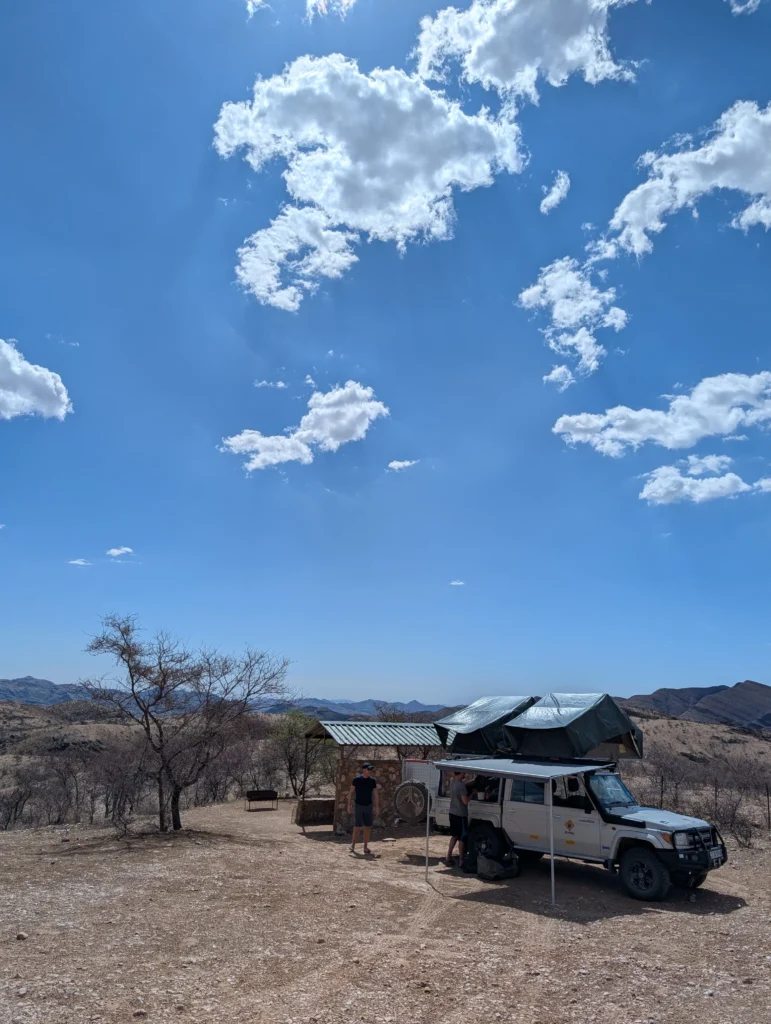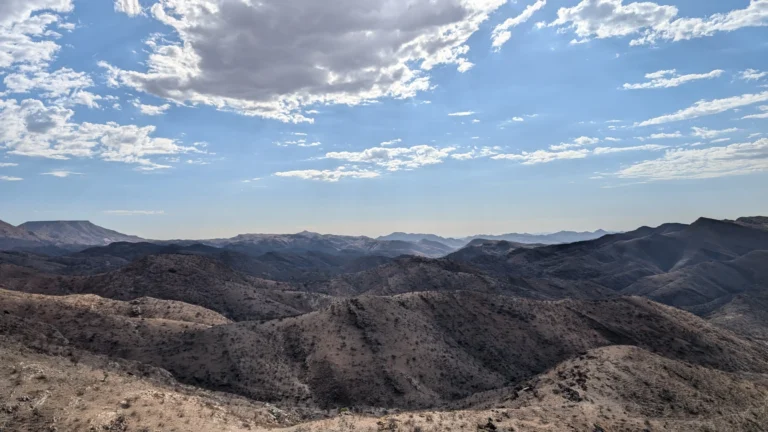On This Page

Introduction: Stargazing in Namibia
Hakos Astrofarm (Namibia) is a remote location in high altitude and offers a spectacular view. One of the clearest views of the night sky available on planet Earth.
This is not a place you stumble upon; it’s a destination you choose for a specific reason. This guide will provide a practical, systems-driven breakdown of what to expect, from the challenging drive to get there to the mind-blowing astronomy tour that makes it all worthwhile. This is the operational manual for your journey to the stars.
The Journey to Hakos: A Guide to the Gamsberg Pass
The first part of the Hakos experience is earning your way there. The farm is located at the top of the Gamsberg Pass, a notoriously steep and winding gravel road. While a 4×4 is not strictly mandatory in the dry season, I would strongly recommend a high-clearance vehicle (like an SUV). A standard sedan will struggle and is at high risk of tyre damage.
The drive is slow and requires your full attention, but it’s also scenically spectacular, with vast views across the Khomas Hochland. The golden rule is to plan your journey to arrive with at least 1-2 hours of daylight to spare. Navigating this pass after dark is not something you want to attempt.
The Main Event: A Guide to the Hakos Observatory Tour
This is the entire reason you make the journey. The nightly tour is not an optional extra; it’s the core function of the farm. It’s a brilliantly structured three-part system designed to take you from a complete novice to a budding astronomer in a single evening.
Part 1: The Sundowner & The Green Flash
The tour begins just before sunset. You’ll join the guide for a short drive to a scenic viewpoint overlooking the Gamsberg mountains. Here, you’ll enjoy a classic Namibian sundowner while the guide explains the science of the sunset, including the rare phenomenon known as the “green flash,” an optical effect you have a real chance of seeing from this altitude.
Part 2: The Planetarium and Constellation Tour
After dinner, you’ll gather for the second phase. The guide uses a powerful laser pointer to trace the constellations of the Southern Hemisphere, telling the stories behind them and helping you navigate the celestial map.
Part 3: The Observatories – Looking Through the Telescopes
This is the grand finale. You’ll be led into the farm’s various observatories, which house powerful telescopes. The guide will point them at different deep-sky objects. Looking through the eyepiece and seeing the rings of Saturn, the moons of Jupiter, or the ethereal glow of a distant nebula with your own eyes is a profoundly moving experience. It’s the difference between looking at a picture of the Grand Canyon and standing on the edge of it.
Critical System Errors: Common Mistakes to Avoid
- Arriving After Dark: I cannot stress this enough. The Gamsberg Pass is a challenging drive in daylight. Attempting it at night is dangerous and a common mistake that puts your trip and vehicle at risk.
- Not Bringing Warm Clothing: You are in the desert, but you are also at an altitude of over 1,800 meters. As soon as the sun sets, the temperature plummets. It can be surprisingly cold, even in summer. You absolutely must bring a warm jacket, a hat, and long pants for the observatory tour.
- Skipping the Observatory Tour: Some visitors, tired from the drive, are tempted to skip the tour. This is a critical error. The tour is the entire purpose of Hakos. It is not an optional activity; it is the reason the farm exists.
Conclusion: The Verdict on Hakos Astrofarm
Is Hakos Astrofarm (Namibia) for everyone? No. If you are looking for a luxurious lodge with infinity pools and fine dining, this is not the right place. As a key stop on our 18-day safari journey, it was a complete departure from the safari lodges.
However, if you are a curious traveler, an adventurer, or anyone with a spark of interest in the cosmos, Hakos offers one of the most authentic and awe-inspiring experiences in all of Namibia. It’s a place that trades luxury for something far more valuable: a new perspective on your place in the universe. It’s a journey worth taking.
Frequently Asked Questions
Do you need a 4×4 to get to Hakos Astrofarm?
A 4×4 is not strictly mandatory, but a high-clearance vehicle (like an SUV) is strongly recommended. The main access road is the Gamsberg Pass, a steep and winding gravel road. A standard sedan would be at high risk of tyre damage and may struggle with some sections.
Is the astronomy tour suitable for beginners with no knowledge?
Absolutely. The tour is specifically designed for beginners and curious travelers. The guides are experts at explaining complex astronomical concepts in a simple, engaging, and easy-to-understand way. No prior knowledge is required.
What is the best time of year to visit Hakos for stargazing?
The winter months (May to September) are generally considered the best time for stargazing in Namibia. The skies are clearest, and the core of the Milky Way is at its most visible. However, the stargazing is excellent year-round, provided there is no cloud cover.


